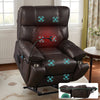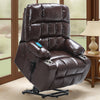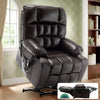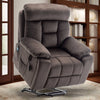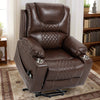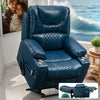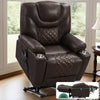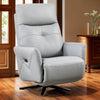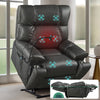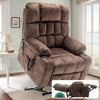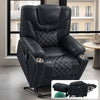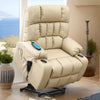Understanding the Needs of the Elderly for Wheelchairs
Evaluating Mobility and Comfort
Mobility and comfort are key factors when choosing a wheelchair for the elderly. As we age, our bodies
require more support and comfort. A good wheelchair should offer both. It's vital to assess the user's
physical condition and mobility level. This helps in selecting the right type of wheelchair.
Some elderly may need full-time use, while others only part-time. The chair should match their needs.
Comfort features like padded seats and armrests are important. These help prevent pressure sores and
provide support. Adjustable footrests can also enhance comfort and proper posture.
Consider the weight of the chair too. Lighter chairs are easier to maneuver. This is crucial for elderly
users who may have limited strength. Remember, a comfortable chair promotes better quality of life.
Assessing the Elderly Individual's Lifestyle and Environment
When choosing a wheelchair, consider the elderly person's daily activities and living space. Their
lifestyle greatly impacts the type of chair needed. Do they spend most time indoors or outdoors? This
affects the wheel type and chair size.
Home layout is another key factor. Narrow doorways may require a compact chair. Stairs might need a
lightweight, foldable option. For those who enjoy outdoor activities, all-terrain wheels are beneficial.
Also, think about storage space. Some homes may not have room for bulky chairs. In such cases, foldable
or travel chairs are ideal. Always involve the elderly person in this assessment. Their input ensures
the chair meets their specific needs and preferences.
Selecting the Best Wheelchair for Elderly Care
The Importance of Ergonomics and Design
Ergonomics play a crucial role in wheelchair design for the elderly. A well-designed chair supports

good posture and reduces strain. This is vital for long-term comfort and health. Look for chairs with
adjustable features. These allow customization to fit individual body types.
The seat should be wide enough for comfort, but not too wide to hinder movement. A slight back tilt
can prevent sliding and improve posture. Armrests should be at a height that supports the arms without
raising the shoulders.
Design isn't just about looks. It's about functionality too. Easy-to-use brakes and wheel locks are
essential for safety. Swivel wheels make turning easier in tight spaces. Some chairs even offer
reclining options, which can be great for rest periods.
Features to Look for in a Wheelchair for the Elderly
When choosing a wheelchair for the elderly, certain features can greatly enhance comfort and usability.
Here's a list of key features to consider:
- Adjustable seat height and depth
- Padded, breathable seat and backrest
- Easy-to-use brakes and wheel locks
- Removable or flip-up armrests for easy transfers
- Adjustable, swing-away footrests
- Anti-tip wheels for added stability
- Lightweight frame for easy transport
- Large, soft wheels for a smoother ride
- Reclining option for comfort during long periods of sitting
- Easy-to-clean materials
Big reclining chairs can be an excellent option for elderly users who spend long hours seated. They
offer extra comfort and the ability to change positions. This can help prevent pressure sores and
improve circulation.
Implementing the Wheelchair into Daily Elderly Care Routines
Training and Empowering Elderly Individuals
Introducing a wheelchair into an elderly person's life requires patience and proper training. It's not

just about using the chair, but also about maintaining independence. Start with basic wheelchair
skills. Teach them how to move forward, backward, and turn safely.
Practice transfers in and out of the chair. This builds confidence and reduces fall risks. Show them
how to use brakes and adjust footrests. If the chair has special features like reclining, ensure they
understand how to use them.
Encourage them to try daily tasks while in the chair. This might include reaching for objects or
navigating through doors. The goal is to help them feel empowered, not limited. Remember, each person
learns at their own pace. Be patient and offer plenty of encouragement.
Monitoring the Impact on Mobility and Independence
Once the elderly person starts using their wheelchair, it's important to monitor its impact. Watch for
changes in their mobility and independence levels. Are they moving around more? Can they do more tasks
on their own? These are positive signs.
Keep an eye out for any discomfort or difficulties. The chair may need adjustments as the user becomes
more comfortable. Regular check-ins can help catch issues early. Ask about their experience and listen
to their feedback.
Also, observe how the wheelchair fits into their daily routine. Is it easy to use in all areas of their
home? Are there any obstacles that need addressing? Making necessary changes can greatly improve the
wheelchair's effectiveness.
Remember, the goal is to enhance quality of life. A well-chosen and properly used wheelchair can offer
more freedom and comfort to elderly individuals. It can help them stay active and engaged in daily
life. With the right support and monitoring, a wheelchair can be a valuable tool for maintaining
independence in later years.








